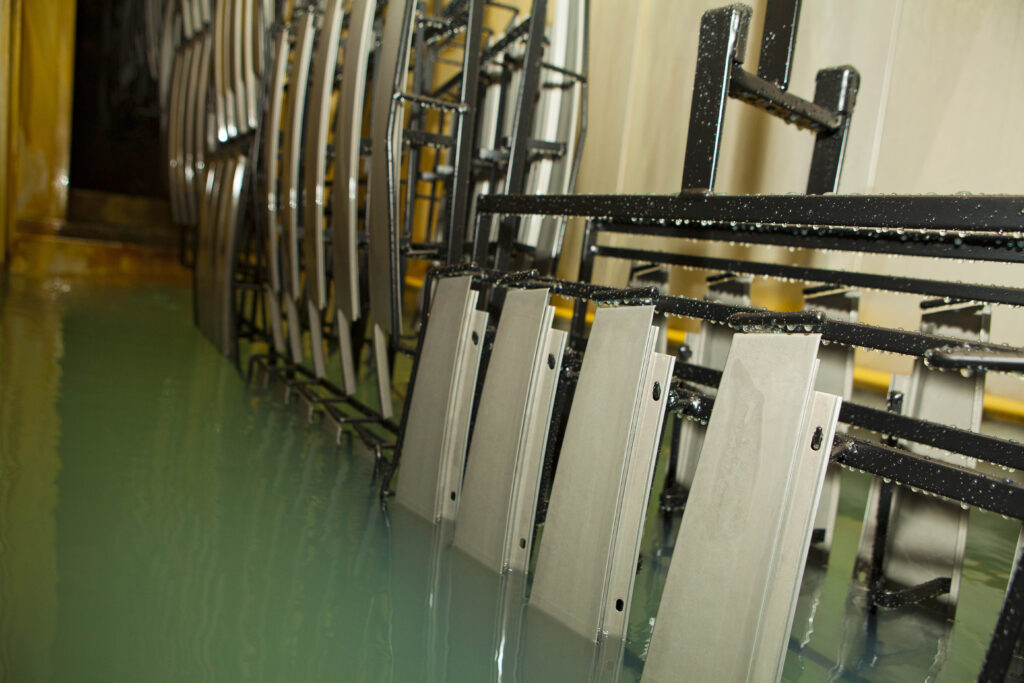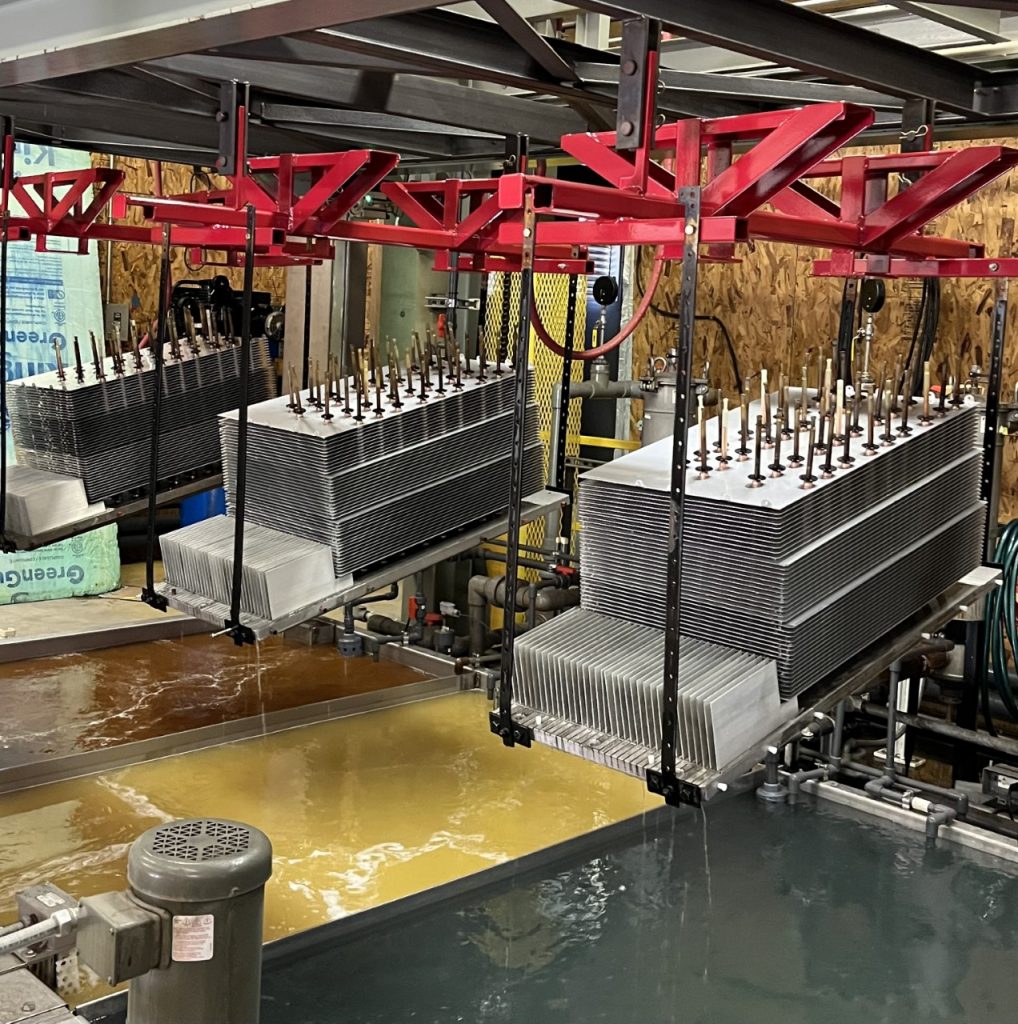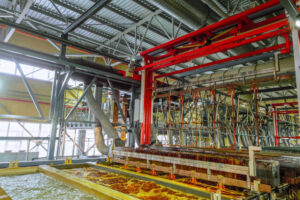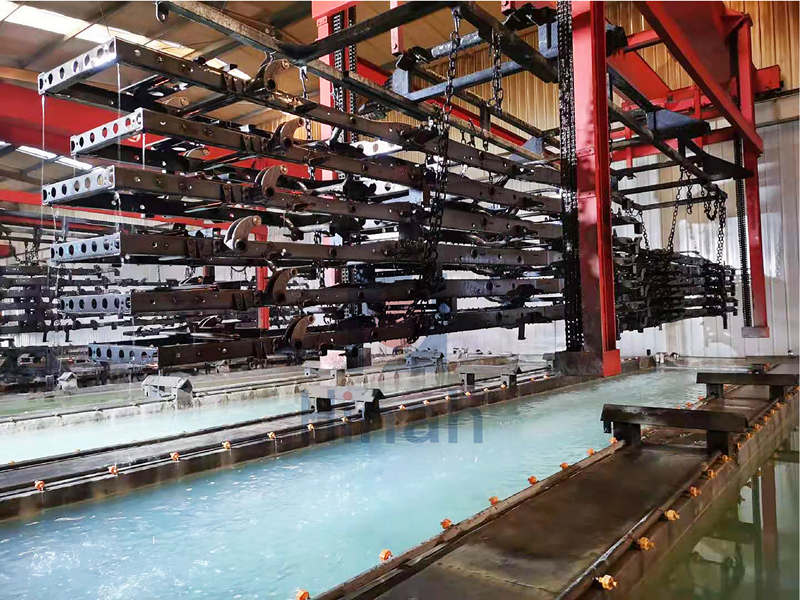Imagine a perfectly coated surface, smooth and flawless, only to discover tiny imperfections—pinhole defects—lurking beneath the finish. Pinholes may seem minor, but they represent a significant challenge in electrophoretic coating lines, where precision and perfection are paramount. What makes pinholes even more problematic is that they are often invisible at first glance. They form quietly, hidden beneath the glossy exterior, but their impact can be far-reaching—leading to issues like corrosion, uneven coatings, and reduced product lifespan. Understanding where they come from and how to tackle them head-on is crucial for maintaining the integrity of your coating process.
Here we’ll explore what causes these troublesome defects, how to identify them, and, most importantly, how to prevent them from disrupting your production. Because in the world of high-quality coatings, every detail matters.


Understanding Pinhole Defects in Electrophoretic Coating
Pinhole defects, though small, can have a major impact on the performance and aesthetic quality of an electrophoretic coating. These tiny, needle-like indentations appear on the surface of the coated object, creating weak points in the film that can lead to a range of issues. But what exactly are pinholes, and why do they pose such a significant challenge?
What Are Pinhole Defects?
Pinhole defects refer to small, circular or needle-shaped indentations that appear on the surface of a coating. These imperfections may be invisible to the naked eye during the application process but can manifest later, often after the object has undergone drying or curing. They are typically very small in size, but even a single pinhole can affect the uniformity and durability of the coating.
It is important to differentiate pinholes from other types of surface defects, such as craters or bubbles. While pinholes are small and typically uniform, craters tend to have a deeper indentation with foreign particles at the center, and bubbles are larger and more irregular. Pinholes are unique in that they often go unnoticed until they begin to cause problems like corrosion or poor adhesion.
Why Are Pinhole Defects a Concern?
At first glance, pinholes may seem like a minor flaw, but their consequences can be much more serious. The presence of pinholes compromises the integrity of the coating by allowing moisture, chemicals, or other contaminants to penetrate the surface, which can lead to corrosion or degradation of the coated material. Over time, pinholes can weaken the protective layer, leading to premature wear, reduced durability, and a shorter lifespan for the coated product.
Additionally, the appearance of the coated object is affected. In industries where visual quality matters, such as automotive or electronics, even the smallest imperfection can be a dealbreaker. Pinhole defects can cause uneven finishes, making the product look unprofessional and poorly manufactured.

Let's Have A Chat
Get An E-coating Line Planning !
Match Your Products, Get The Solution & Price..


Types of Pinhole Defects in Electrophoretic Coating
Pinhole defects in electrophoretic coating can arise from several causes, each with its own characteristics. Understanding these different types is key to identifying their root causes and finding effective solutions. The three most common types of pinholes are re-solubility pinholes, gas-related pinholes, and charged insertion step pinholes.
Re-solubility Pinhole
This type of pinhole occurs when the wet coating film is not properly rinsed after the electrophoresis process, allowing the coating to re-dissolve in the bath. As the film re-solubilizes, small holes form on the surface, leading to pinholes in the final finish. This issue typically arises when the wet film is exposed to the bath too long, or if rinsing is delayed, causing the coating to weaken and form defects.
Gas-Related Pinhole
Gas-related pinholes are caused by excessive gas bubble formation during the electrophoretic process. Intense electrochemical reactions in the bath can create too many gas bubbles, and if the defoaming process is inadequate, these bubbles get trapped in the film. During the drying or curing stage, these trapped gas bubbles burst, creating pinholes in the coating. Low bath temperatures or insufficient agitation during the process can exacerbate this problem, as they prevent effective gas removal and proper film formation.
Charged Insertion Step Pinhole
This type of pinhole arises when the coated object is improperly inserted into the electrophoretic bath. If the insertion is not smooth or if the object enters the bath too quickly, the coating can form along the diagonal line of the bath, causing pinholes. Additionally, poor wetting of the substrate’s surface can cause air bubbles to become trapped in the coating, particularly at the bottom of the object. These trapped bubbles eventually burst, leading to gas-related pinholes, especially in the lower portions of the coated object.


Preventive Measures and Solutions
Addressing pinhole defects in electrophoretic coating requires a combination of timely actions and effective process controls. By implementing the right preventive measures, manufacturers can significantly reduce the occurrence of pinholes and ensure a smooth, durable coating.
Immediate Rinsing After Coating
One of the most effective ways to prevent re-solubility pinholes is to ensure that the coated object is rinsed immediately after the electrophoretic process. Once the coating is applied, it’s critical to quickly remove the workpiece from the bath and rinse it with pure water or UF liquid. This prevents the wet film from re-dissolving, thereby eliminating the possibility of pinhole formation due to re-solubility.
Control Contaminants and Bath Conditions
Maintaining the correct concentration of ions and contaminants in the bath is essential for preventing gas-related pinholes. Regularly test the bath for impurities and ensure the ion concentration is within specified ranges. This will help avoid excess gas bubble formation during the electrophoretic process. Additionally, maintaining the correct bath temperature (typically between 28-32°C for cathodic electrophoresis) and ensuring proper agitation can reduce the risk of bubble formation and improve film quality.
Proper Insertion Technique
To eliminate charged insertion step pinholes, ensure that the insertion of the workpiece into the bath is smooth and consistent. The surface flow rate should be kept above 0.2 m/s to minimize foam buildup and air entrapment. Additionally, avoid slow transport chain speeds during the insertion process to ensure an even coating. These adjustments will help prevent bubbles from becoming trapped and causing pinholes.
Optimize Wash Pressure
Control the wash pressure during the final rinse to avoid water washing pinholes. The pressure should not exceed 0.15 MPa to prevent damaging the coating and forming defects. Furthermore, ensure that the coating has good electrophoretic properties by controlling solvent content and impurity levels in the bath, which will contribute to a denser, more uniform coating.






